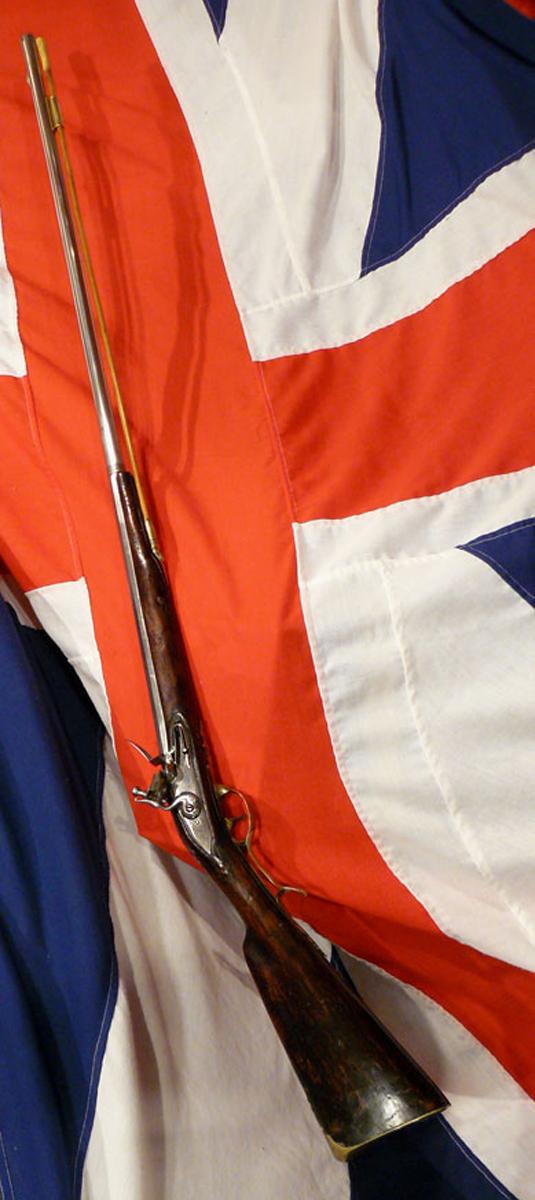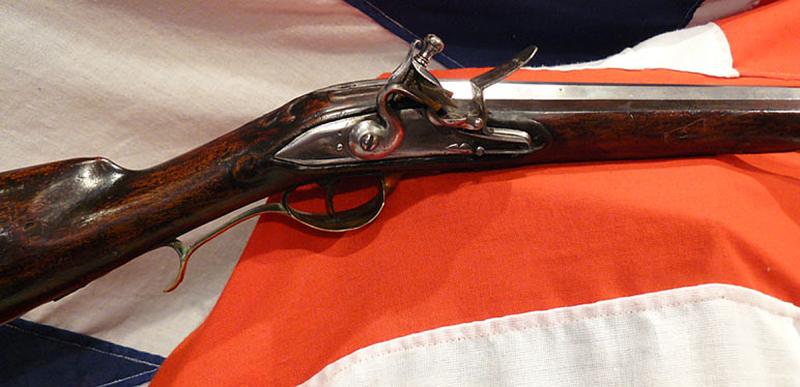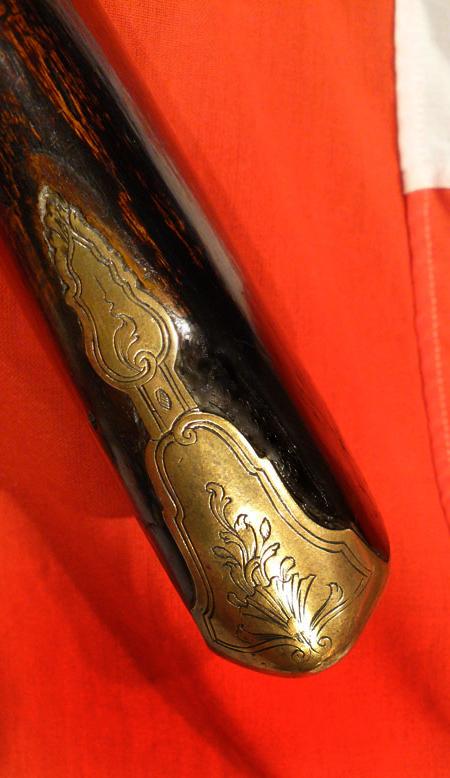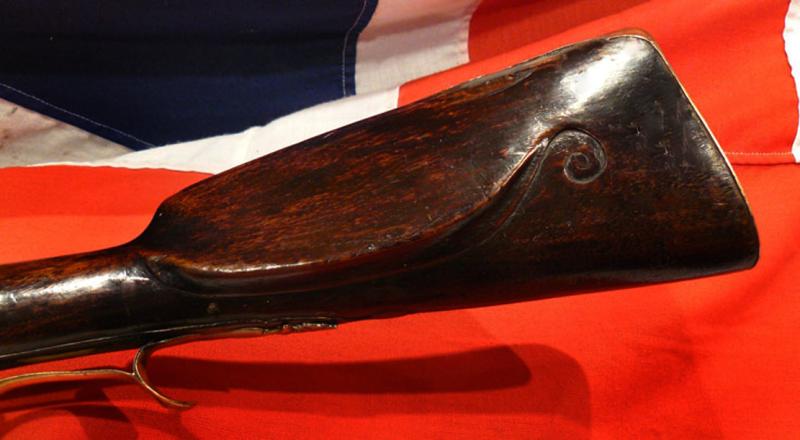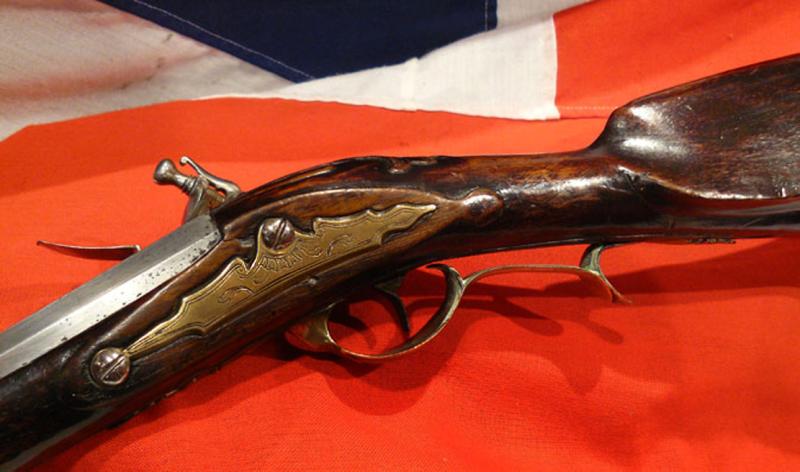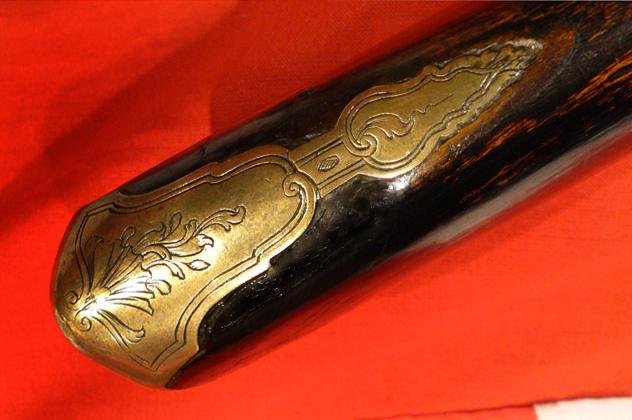A Most Beautiful Early 18th Century Austrian Flintlock, A Royal Castle Gun, Originally Made in Vienna Possibly by Fowler & Riflemaker Casper Zelner. Latterly Used in the American Revolutionary War of the 1770's
Somewhat reminiscent of the beautiful guns produced by Caspar Zelner of Vienna, as his long guns utilized the rifle style trigger guard combined with stock cheekpiece despite being a fowler, Likely to make the gun more accurate than a regular fowler, but an expensive addition to the guns initial cost, but if it was indeed made as a royal castle gun for the hunts of the dukes and princes, this would be an inconsequential expense.
The brass trigger guard bow and front tang are have deep scroll carving. The brass buttplate tang is also nicely carved and engraved. The brass wrist escutcheon has a royal coat of arms in the center. The brass sideplate is very well executed. The carved half stock is fine. It has edge lines along the ramrod channel, carving and edge lines along the trigger guard, carving around the barrel tang, and decorative lines at the forward part of the comb. The action functions correctly. It's unusual to find an early fowler with its original full length barrel as most were shortened during their period of use. This could very well be a castle gun, originally used for royal hunts. Then possibly taken by an officer nobleman who fought in the American Revolutionary War with the Prussians for the British, or, for the American Continental Army
From the American Revolutionary War period. Banana shaped lock, good swan necked cock and walnut stock with finest brass mounts.
The great military arms collections in the US such as the Smithsonian and the Metropolitan have numerous guns of this very type, all once the property of officers serving in the American Continental Army during the War of Independence. This is a very nice example in very good order with a good sound action. The mounts are beautiful quality, in all brass, superbly deluxe engraved.
Ethnic Germans, and indeed Austrians, served on both sides of the American Revolutionary War. Large numbers of Germans had emigrated to Pennsylvania, New York, and other American colonies, and they were generally neutral. Some belonged to pacifist sects such as the Amish, but many were drawn into the Revolution and the war.
Germans in Europe lived in numerous separate states. Some of these states had been in alliance with Britain during the Seven Years' War, and were eager to assist Great Britain. Britain had used auxiliary forces in every one of its 18th century wars, their use in suppressing rebellion seemed consistent with previous policy. Their use against British subjects was controversial, however. Despite British Whig opposition to using German soldiers to subjugate the "sons of Englishmen," Parliament overwhelmingly approved the measure in order to quickly raise the forces need to suppress the rebellion.
The leasing of soldiers to a foreign power was also controversial to some Europeans, but the people of these continental states generally took great pride in their soldiers' service in the war. Prussia notably rejected the request to send soldiers. Germans living in America did not enlist in the auxiliary units but some enlisted in British units. The 60th (Royal American) Regiment recruited both from the Americas and from Germany.
Colonial-era jurists drawing a distinction between auxiliaries and mercenaries, with auxiliaries serving their prince when sent to the aid of another prince, and mercenaries serving a foreign prince as individuals.13 By this distinction, the troops which served in the American Revolution were not mercenaries, but auxiliaries. Early Republican historians, however, defended the term "mercenaries" to distinguish the foreign, professional armies from the idealized citizen soldier who altruistically fought for independence.14 Mercy Otis Warren promoted the idea of German auxiliaries as barbarians, but also as victims of tyranny.15
Throughout the war, the United States attempted to entice the hired men to stop fighting. In April 1778, Congress issued a letter, addressed "To the officers and soldiers in the service of the king of Great Britain, not subjects of the said king", which offered land and livestock to defecting German units, in addition to increased rank.16 At the conclusion of the war, Congress offered incentives—especially free farmland—for these ethnic Germans to remain in the United States. Great Britain also offered land and tax incentives to its Loyalist soldiers willing to settle in Nova Scotia in present-day Canada.
41.5 inch barrel, 57 inches long overall
Code: 24963
1395.00 GBP

